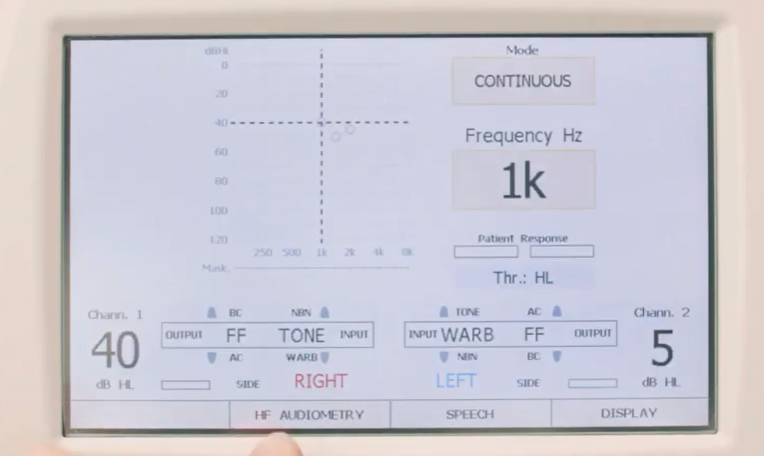Pure Tone Audiometry
Introduction
Understanding Pure Tone Audiometry
Welcome to the world of Pure Tone Audiometry! If you’ve ever wondered what this term means or how it relates to hearing health, you’re in the right place. In this article, we’ll take a deep dive into Pure Tone Audiometry and uncover its ins and outs, from its basics to FAQs and more. So, let’s get started and unravel the world of Pure Tone Audiometry!

What is Pure Tone Audiometry?

Pure Tone Audiometry, often referred to as PTA, is a standardized hearing test that measures an individual’s hearing sensitivity. It is the most common and fundamental diagnostic tool used by audiologists and other hearing health professionals to assess a person’s hearing abilities. PTA helps in identifying the type, degree, and configuration of hearing loss, which enables clinicians to make accurate diagnoses and develop appropriate treatment plans.
How Does Pure Tone Audiometry Work?
During a Pure Tone Audiometry test, the individual wears headphones and listens to a series of pure tones or beeps at different frequencies and volumes. The individual’s task is to respond whenever they hear a sound by raising their hand, pressing a button, or indicating in any other way. The results are plotted on an audiogram, which is a visual representation of the individual’s hearing thresholds.

Understanding Audiograms

Audiograms are graphs that display an individual’s hearing thresholds at different frequencies. The horizontal axis of the audiogram represents the frequency, which is measured in Hertz (Hz), and the vertical axis represents the intensity or loudness of the sound, which is measured in decibels (dB). The hearing thresholds are plotted on the audiogram using different symbols, such as X for the left ear and O for the right ear. The symbols are connected with lines to form a pattern that helps identify the type, degree, and configuration of hearing loss.
Types of Pure Tone Audiometry
There are different types of Pure Tone Audiometry tests that can be conducted depending on the purpose and age of the individual being tested. Let’s take a look at some of the common types:
1. Air Conduction Audiometry: This is the most basic type of Pure Tone Audiometry that assesses the individual’s overall hearing sensitivity across different frequencies. The individual wears headphones and responds to pure tones presented through the headphones.

2. Bone Conduction Audiometry: This type of test bypasses the outer and middle ear and directly stimulates the inner ear using a bone conduction vibrator. It helps identify if the hearing loss is due to a problem in the outer or middle ear or if it originates in the inner ear or beyond.
3. Masking: When testing one ear, masking is used to prevent the other ear from responding to the sound stimulus. This is done by introducing white noise or another sound in the non-test ear to ensure that the individual only responds to the sound presented in the test ear.
4.Pediatric Audiometry: Pure Tone Audiometry can also be adapted for testing infants and young children who may not be able to respond reliably to pure tones. Visual reinforcement audiometry, play audiometry, or conditioned play audiometry are some of the techniques used to make the test child-friendly and obtain accurate results.
Importance of Pure Tone Audiometry

Pure Tone Audiometry is a critical tool in diagnosing hearing loss and evaluating an individual’s hearing abilities. It helps in identifying the type, degree, and configuration of Pure Tone Audiometry is a critical tool in diagnosing hearing loss and evaluating an individual’s hearing abilities. It helps in identifying the type, degree, and configuration of hearing loss accurately, which is crucial in developing appropriate treatment plans. Here are some reasons why Pure Tone Audiometry is important:
1. Early Detection of Hearing Loss: Pure Tone Audiometry can detect hearing loss at an early stage, allowing for timely intervention and management. Early detection is essential in preventing further deterioration of hearing abilities and minimizing the impact of hearing loss on an individual’s quality of life.
2. Customized Treatment Plans: Based on the results of Pure Tone Audiometry, customized treatment plans can be developed to address the specific type and degree of hearing loss. This may include hearing aids, assistive listening devices, cochlear implants, or other interventions tailored to the individual’s needs.
3. Monitoring Progress: Pure Tone Audiometry can be used to monitor the progress of an individual’s hearing abilities over time. Regular follow-up tests can help assess the effectiveness of the treatment plan and make necessary adjustments to ensure optimal outcomes.
4. Occupational and Safety Considerations: Pure Tone Audiometry is commonly used in occupational settings, such as industries with high noise exposure, to ensure that employees are not at risk of noise-induced hearing loss. It is also used in safety evaluations for tasks that require good hearing abilities, such as driving or operating heavy machinery.
5. Legal and Insurance Purposes: Pure Tone Audiometry results are often

